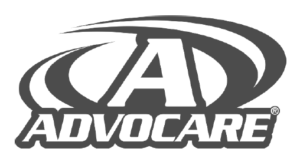So many individuals tend to set their sights on losing weight when they begin a new fitness regimen, but the truth is that any well-designed eating strategy should focus on improving your body composition as a whole rather than simply causing weight loss. Body composition is the term given to the ratio of fat to muscle in your body. While losing fat is an obvious goal of any weight management program, the effects of diet and exercise on muscle mass are often overlooked. There are four possible outcomes that can happen as we attempt to modify our body composition:
1) Lose fat and lose muscle.
Most dieting strategies work though this mechanism, and while they may result in one getting smaller and thinner, losses in muscle are not a desirable outcome when it comes to weight management. Muscle is the engine that drives metabolism and is the greatest consumer of energy (calories) throughout your day. Losing muscle often results in a loss in weight, with minimal decreases in stored body fat, causing one to be “skinny fat”. Put another way, skinny fat people are of normal body weight, but have a high body fat percentage. This is not a desirable outcome of a fat loss program.
2) Gain muscle with no loss in fat.
Increases in muscle without fat loss typically occur when one is weight training but is over-consuming on calories. This results in building muscle underneath the existing fat and can lead to increases in body size while simultaneously decreasing body fat percentage. The most common example of this is women who say that weight lifting makes them “bulky”. While these changes will improve metabolic health and lead to small decreases in body fatness, this is usually not a desirable situation, as most people want to lose fat and get physically smaller when they undertake a weight loss program.
3) Lose fat with no loss in muscle.
This is what many will strive to achieve when they diet and is a very good goal when it comes to changing body composition. Retaining as much muscle as possible helps to prevent decreases in the resting metabolic rate as one gets lighter, and muscle contributes to the “fit” look that is so often the goal when one tries to lose weight.
4) Lose fat and gain muscle.
This is the most desirable goal of your eating and training plan, and you will often hear that simultaneous fat loss and muscle gain can’t be achieved. The truth is that any well-designed diet and exercise program should focus on increasing muscle mass while also losing fat. This is most easily accomplished by eating in a slight/moderate calorie deficit, while also adding weight training. Increasing muscle while in a caloric deficit will require an increase in protein intake, as well as an adequate balance of carbohydrates and fats. The amount of muscle that can be gained while in a caloric deficit is dependent on several factors including genetics, intensity of training, and how much muscle one has to start with. Untrained or inexperienced lifters having a greater potential to increase muscle mass than someone who has a long training history.
With a properly designed diet and exercise strategy, maintaining or increasing muscle mass should be the norm rather than the exception. To ensure that you’re maintaining or gaining muscle while still losing fat, one needs to be sure to eat in a slight caloric deficit, while increasing protein intake and performing regular, high intensity weight training.
This piece is for educational purposes only. See your healthcare provider before making changes in your diet or exercise regimen.





